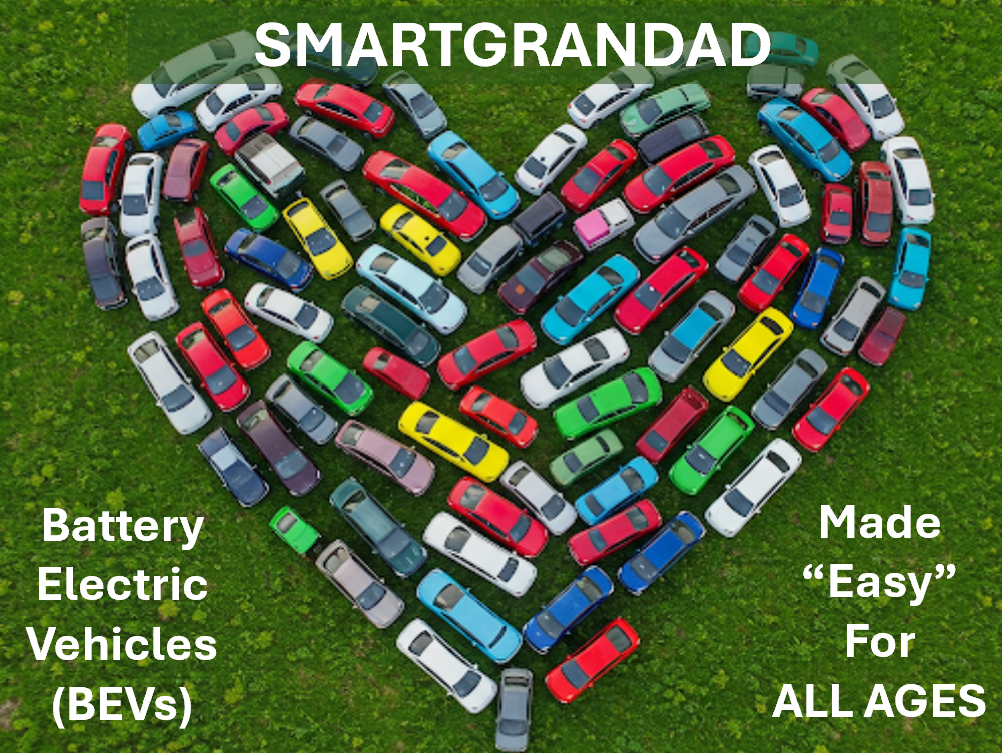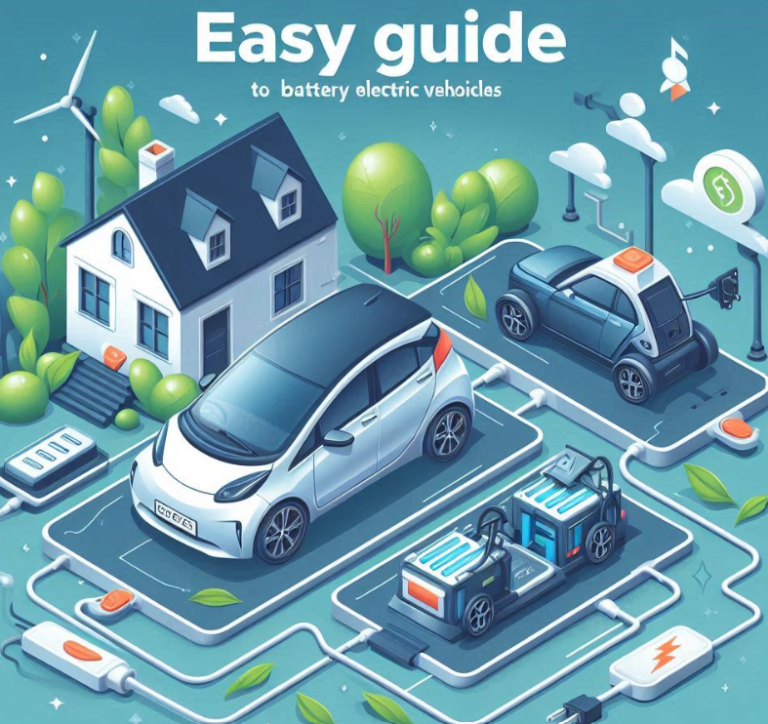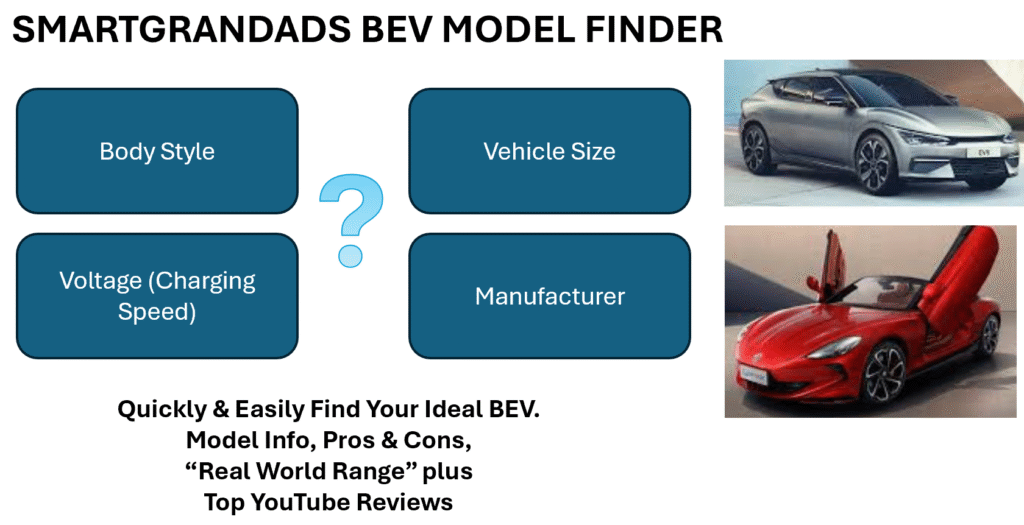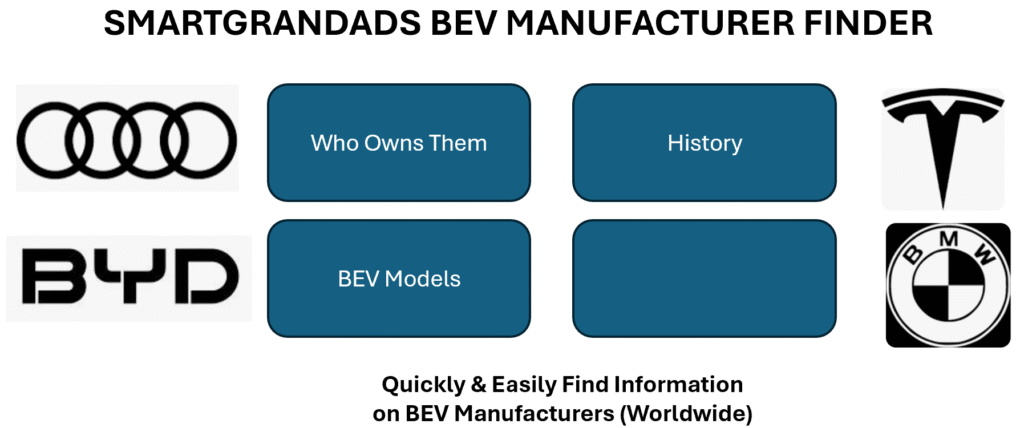OPINION: WHEELS AND LEGS – Todays Car Companies Tomorrows AI Robot Companies?
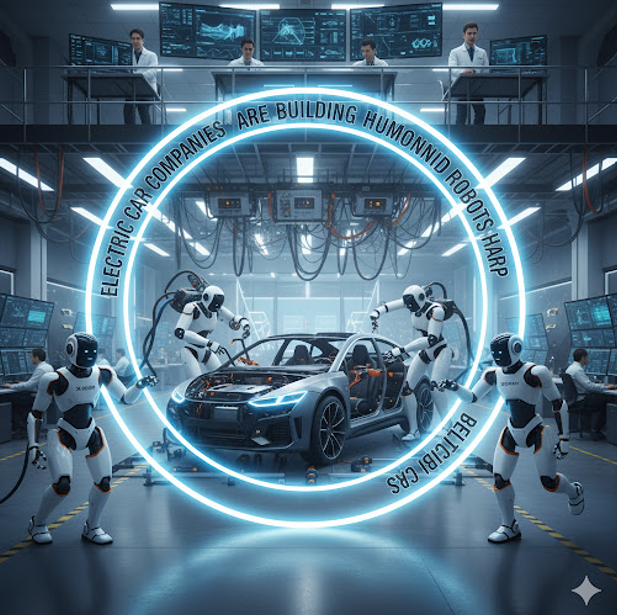
The Shared DNA: Why Car Companies?
It might seem like a distraction for a car company to build a walking robot, but the technological overlap is nearly perfect. The synergy creates a “flywheel” effect where advancements in one field directly benefit the other.
So, maybe it will come as no surprise that todays top car companies are also heavily into robotics with some already launching ROBOTAXIs.
Their next decade products will automate more and more of your daily life chores and experiences.
The Battery and Motor Problem
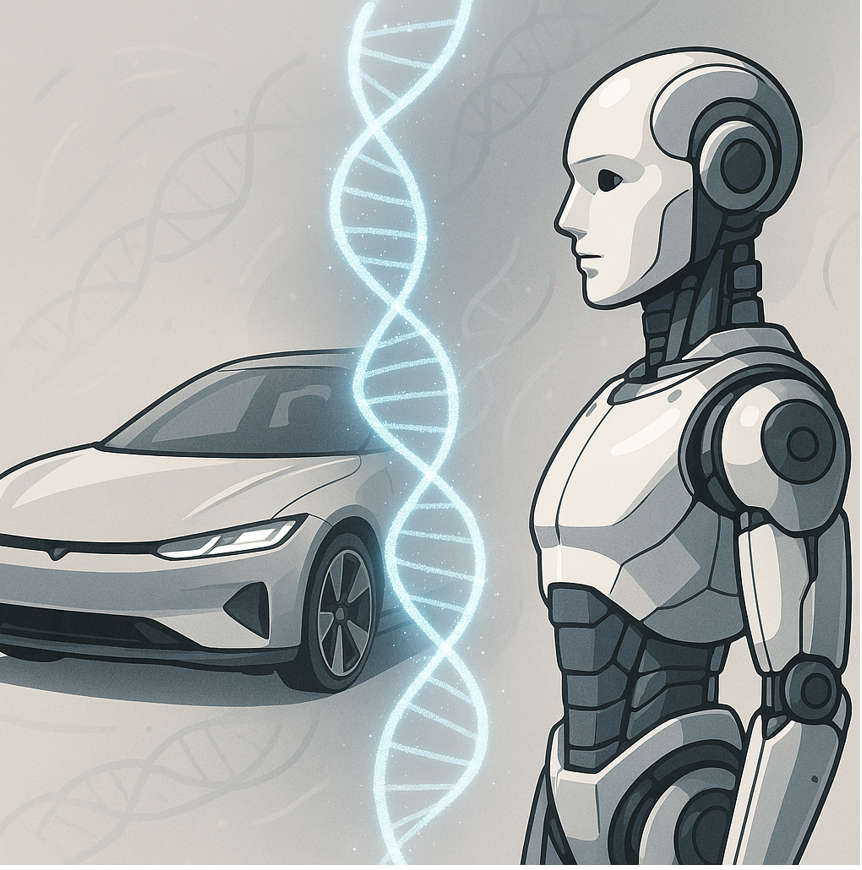
For decades, robots were either hydraulic (loud, leaky) or tethered to a wall because batteries were too heavy. The EV revolution solved this. The same high-density battery cells that give a sedan a 300-mile range are now light and powerful enough to power a humanoid robot for a full work shift.
Similarly, the electric motors (actuators) designed to move car windows, seats, and wheels have been miniaturized to drive robotic joints.
The AI Brain
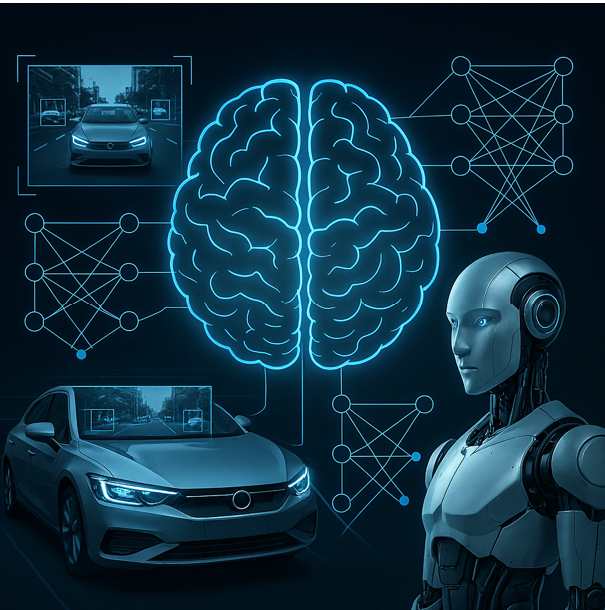
This is the biggest link. A self-driving car is essentially a robot that lives in a structured environment (roads). It uses cameras to identify lanes, pedestrians, and obstacles. A humanoid robot needs to do the same thing, just in a more chaotic environment (factories or homes).
- Tesla famously uses the same “FSD” (Full Self-Driving) computer and occupancy network software in its Optimus robot as it does in its Model Y.
- Xpeng uses its “Turing” AI chips in both its cars and its new Iron robot.
Mass Production
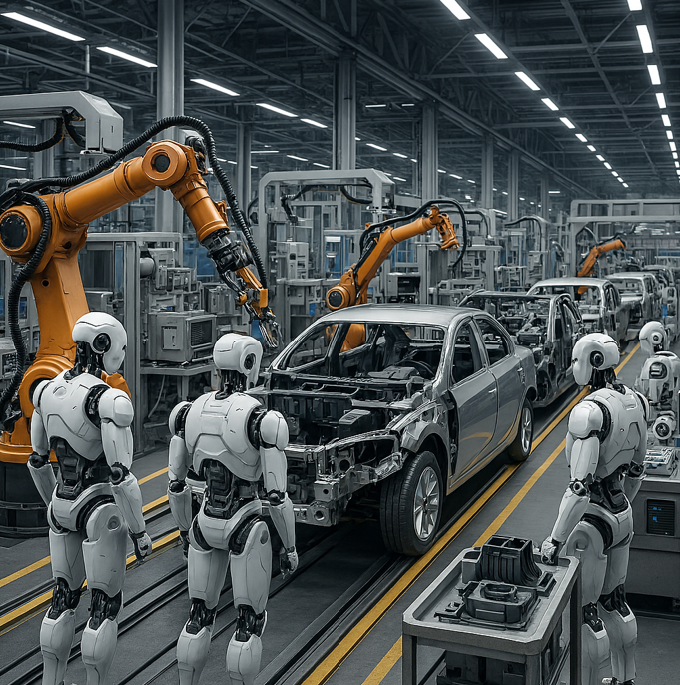
Building a prototype robot is easy; building 10,000 of them is a nightmare. Car companies are the masters of supply chain and mass manufacturing. They know how to stamp metal, mold plastic, and assemble complex machines at scale—a skill pure robotics startups often lack.
The Key Players
Here are the major automakers that have crossed the Rubicon into humanoid robotics.
Tesla (Optimus)

Tesla is the loudest proponent of this trend. Elon Musk has stated that the company’s long-term value may come primarily from Optimus, not its cars.
- The Synergy: Optimus uses Tesla-designed actuators and battery packs. It “learns” by watching video, similar to how Tesla’s fleet learns to drive.
- The Goal: Tesla plans to use Optimus in its own Gigafactories first, performing unsafe or repetitive tasks, effectively “eating their own dog food” before selling the bot to others.
Hyundai (Boston Dynamics)
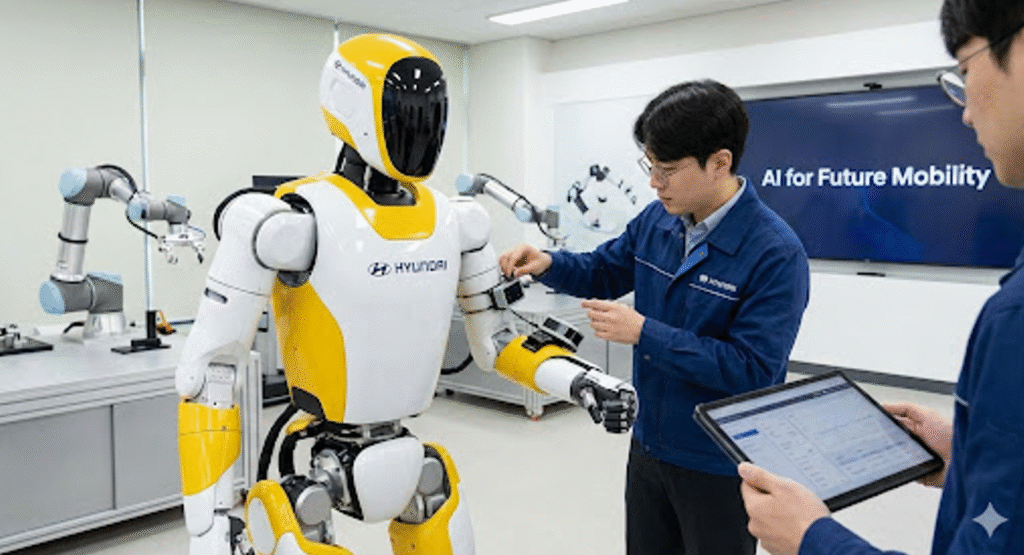
While Tesla builds from scratch, Hyundai took a shortcut: they bought the best. Hyundai acquired Boston Dynamics (creators of Spot and Atlas).
- The Synergy: Hyundai envisions a “Metamobility” future where robots are just another form of transportation. They are integrating Boston Dynamics’ legendary mastery of balance and movement with Hyundai’s mass-production capabilities to lower the costs of robots like Atlas and Spot.
Xiaomi (CyberOne)

The Chinese tech giant XIAOMI, which recently released its SU7 electric car to massive acclaim, also builds the CyberOne.
- The Synergy: Xiaomi views itself as an “ecosystem” company. Their “Mi-Sense” depth vision module works across their devices. CyberOne is capable of perceiving 3D space and recognizing human emotion, bridging the gap between a cold industrial tool and a domestic companion.
Xpeng (Iron)
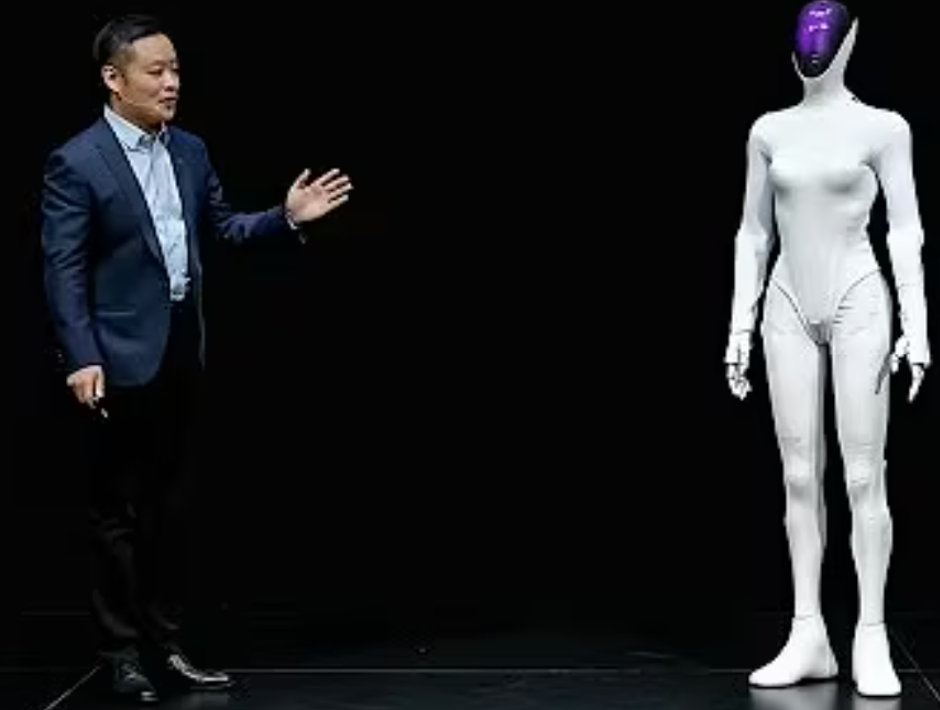
Xpeng is often called the closest rival to Tesla in terms of tech culture, and their robotics division proves it. In late 2025, they unveiled Iron, a humanoid robot already being deployed on their own EV production lines.
- The Synergy: Xpeng explicitly stated that Iron uses the same AI chips as their vehicles. This allows them to amortize the massive cost of chip development across two product lines—cars and robots.
Honda (Avatar Robot)

The veteran of the group. Honda spent decades developing ASIMO, arguably the grandfather of modern humanoids. While ASIMO was retired, the tech lives on in their new Avatar Robot.
The Synergy: Unlike the others focusing on autonomous factory labor, Honda is focused on telepresence—allowing a human to “possess” the robot from miles away to perform delicate tasks (like emergency medical response) using haptic feedback hands derived from their automotive research.
The “Partnership” Model (BMW & Mercedes)
Not every car company is building their own robot; some are hiring them.
- BMW has partnered with robotics startup Figure to deploy humanoid robots at their Spartanburg, SC plant.
- Mercedes-Benz is testing Apptronik’s Apollo robot for logistics. While they aren’t building the bots themselves, they are the critical first customers shaping the industry.
The Future: The Factory Loop

The most immediate consequence of this link is circular. Electric car companies are building humanoid robots to help build electric cars.
This feedback loop is unique in industrial history. As the robots get better, the cars get cheaper to produce. As the cars sell more, the companies have more capital and data to improve the robots.
We are moving away from an era where cars are just vehicles, just consider the spread of ROBOTAXIs, and into an era where they are the first generation of intelligent, battery-powered machines—the ancestors of the androids to come.
Whats your opinion,will some of todays Car Manufacturers become Tomorrows Robot Manufacturers?
Please comment in the Feedback Section Below.
NEW: #4 SG EXPLAINS XPENG APP REMOTE CLIMATE CONTROLS
#3 SG SG EXPLAINS XPENG APP – NAVIGATION
Want SMARTGRANDAD to explain something on EVs, just send the suggestion in the Feedback section below.
If you want SMARTGRANDAD to write an EV related article, just send the suggestion in the Feedback section below.
